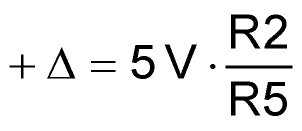The challenge of improving analog/digital accuracy by preventing amplifier saturation in systems supplied with only a single logic-level power rail has been receiving a lot of activity and design creativity recently. Voltage inverters generating negative rails for keeping RRIO amplifier output circuitry “live” at zero have received most of the attention. But frequent and ingenious contributor Christopher Paul points out that precision rail-to-rail analog signals need similar extension of the positive side for exactly the same reason. He presents several interesting and innovative circuits to achieve this in his design idea “Parsing PWM (DAC) performance: Part 2 – Rail-to-rail outputs” (Ref. 1).
The design idea presented here addresses the same topic but offers a variation on the theme. It regulates inverter output through momentary (on the order of tens of microseconds) digital shutdown of the capacitive current pumps instead of post-pump linear regulation of pump output. This yields a very low quiescent, no-load current draw (<50 µA) and achieves good current efficiency (~95% at 1 mA load current, 99% at 5 mA)
Figure 1 shows how it works.
 |
|
| Figure 1. | Direct charge pump control yields efficient generation and regulation of bipolar beyond-the-rails voltages. |
Schmidt trigger oscillator U1a provides a continuous ~100 kHz clock signal to charge pump drivers U1b (positive rail pump) and U1c (negative rail). When enabled, these drivers can supply up to 24 mA of output current via the corresponding capacitor-diode charge pumps and associated filters: C4 + C5 for the positive rail, C7 + C8 for the negative. Peak-to-peak output ripple is ~10 mV.
Output regulation is provided by the charge pump control from the temperature compensated discrete transistor comparator Q1:Q2 for U1c on the negative rail and Q3:Q4 for U1b on the positive. Average current draw of each comparator is ~4 µA, which helps achieve those low power consumption figures mentioned earlier. Comparator voltage gain is ~40 dB = 100:1.
The comparators set beyond-the-rails voltage setpoint ∆s in ratio to +5 V of:

for the negative rail = –250 mV for values shown

for the positive = +250 mV for values shown
Note that the output of the Q1:Q2 comparator is opposite to the logic polarity required for correct U1c control. Said problem being fixed by handy inverter U1d.
References
- Paul, Christopher. “Parsing PWM (DAC) performance: Part 2 – Rail-to-rail outputs.”